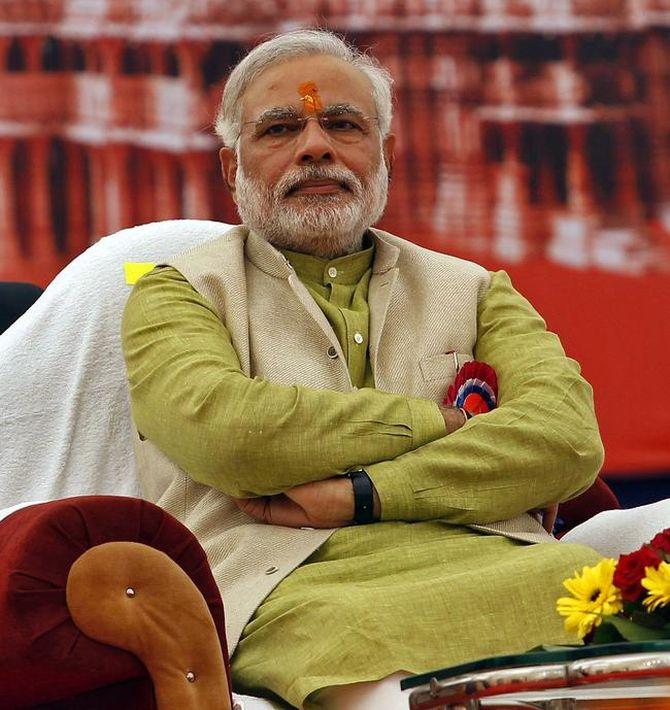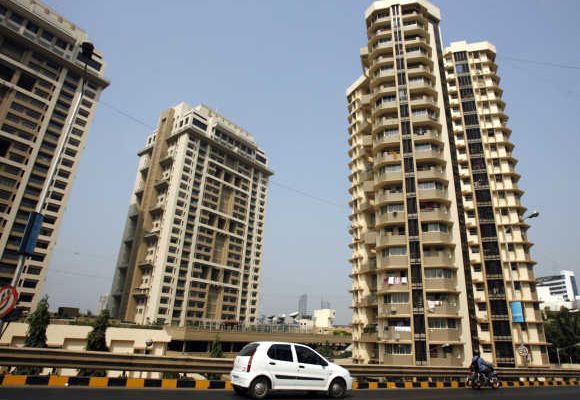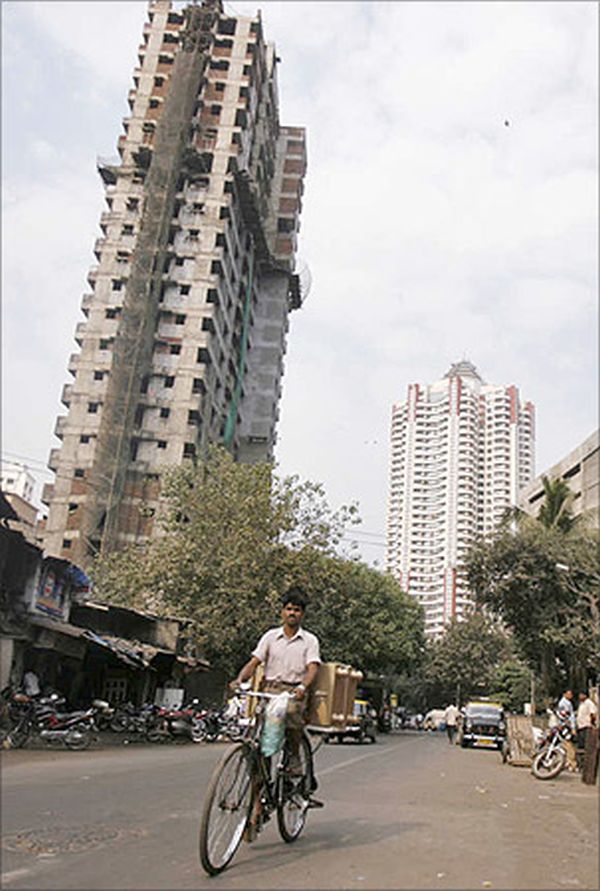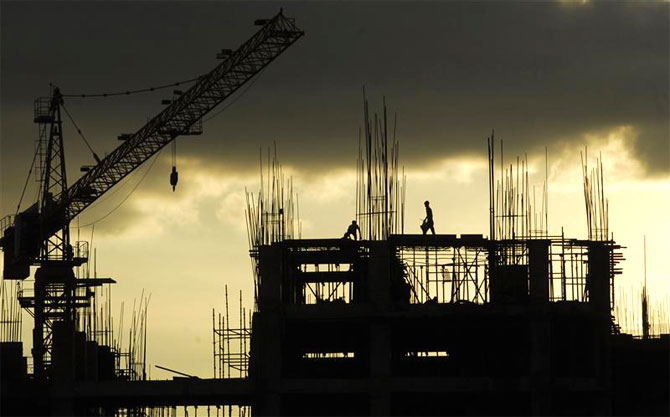Photographs: Reuters Aditi Shah in Ahmedabad
A low-cost housing project in Boisar, a satellite town outside Mumbai, offers a taste of how hard it will be for Narendra Modi to fulfil a pledge to provide affordable homes for every Indian family if, as expected, his party wins India's election.
India needs about 19 million low-cost homes -- roughly defined as costing a million rupees ($16,700) and below -- to shelter an urban population expected to nearly double to 600 million by 2030 from 2011.
Consultants Monitor Deloitte estimated that the low cost housing segment represented a $150 billion business opportunity, but the challenge for developers lies in earning sufficient margin returns.
At Boisar, a modest industrial town 100 kilometres (60 miles) north of Mumbai, Tata Housing is close to completing the construction of 1,200 cheap homes.
. . .
Modi sells Indian voters low-cost housing dream
Image: Buildings under constructionPhotographs: Reuters
But faced with disappointing profit margins the developer has been forced to raise prices, redefining the notion of what is ‘affordable’.
"It is a tough model," said Brotin Banerjee, CEO of Tata Housing, which has invested up to Rs 40 billion ($666 million) in low-cost homes, with about 20,000 units built or under construction across the country.
Market prices for Tata's low-cost apartments in Boisar have more than doubled to 1.8 million rupees ($30,000) since off-plan sales began in 2009 when the developer sold most homes.
But, Tata has failed to generate margins of more than 20 per cent it had sought and now expects to earn 15 to 16 per cent, far below the margins of 30 to 50 per cent that mid-tier and premium housing projects earn developers.
. . .
Modi sells Indian voters low-cost housing dream
Image: In India, housing is a state and not a federal subject.Photographs: Reuters
The Bharatiya Janata Party, led by prime ministerial front-runner Modi, promised in its election manifesto to adopt a a low-cost housing policy that would ensure every family in Asia's third-largest economy has a home by 2022.
While details are scarce, it aims to make land more easily available to developers, and to provide them with incentives to build cheaper homes.
In India, housing is a state and not a federal subject, and it is unclear who will foot the bill in a country where government finances are stretched, and land prices are under almost constant upward pressure in overcrowded megacities like Delhi and Mumbai.
. . .
Modi sells Indian voters low-cost housing dream
Image: NaMo clock.Photographs: Courtesy, bluegape.com
Tata Housing's Banerjee said costs rose and margins shrank in Boisar because project approvals were delayed, and the company had had to bring in basic infrastructure like roads, water and electricity -- services it had expected the government to provide.
"I would be pleasantly surprised if this government or the new government were to really implement and execute things which they should be doing and which in their manifestos they profess to do.
“Definitely anything would be better than doing nothing which has been the case so far," said Banerjee.
. . .
Modi sells Indian voters low-cost housing dream
Image: Low cost housing.Photographs: Reuters
For future projects Banerjee plans to build on land which has the basic infrastructure and to secure project approvals before selling any units off-plan -- moves that will help protect margins but also make the homes dearer.
Gujarat model
Value & Budget Housing Corporation, founded by former Citigroup Inc banker Jaithirth Rao and backed by private equity firm Carlyle Group, has also changed its definition of affordable housing to units of 3 million rupees and below from a range of Rs 500,000 to Rs 900,000 in 2009, according to Vivin Mathew, CEO for India's western region.
. . .
Modi sells Indian voters low-cost housing dream
Image: In Gujarat state, where Modi is chief minister and which boasts the largest stock of affordable housing in India, a policy was introduced in January to encourgage developers to build cheap homes.Photographs: Reuters
"Unless the government gives a direct subsidy (to developers) it is very difficult, or unless you make a really small apartment, I do not see how else you can do it under a million rupees," he said.
This is putting low-cost homes out of reach for many price-sensitive buyers, said Madhusudhan Menon, chairman at Micro Housing Finance Corporation, which mainly lends to people with an income of between Rs 12,000 to 30,000 a month.
In Gujarat state, where Modi is chief minister and which boasts the largest stock of affordable housing in India, a policy was introduced in January to encourgage developers to build cheap homes.
. . .
Modi sells Indian voters low-cost housing dream
Image: Narendra Modi.Photographs: Reuters
Still in its infancy, the policy invites developers to build low-cost homes on public land and subsidises part of the building cost.
Developers can also build on their own land, where they are allowed to construct taller buildings.
Sanjay Shah, founder and CEO of DBS Communities, which builds low-cost homes in Gujarat, plans to construct 50,000 units by 2020 from 5,000 today.
When Shah started four years ago he capped the maximum price at a million rupees, but scarce land, a lengthy approval process and insufficient cheap capital has forced him to increase it to 1.5 million rupees.
He also failed to meet his margin expectation of 30 to 35 percent, and said that if costs keep rising and there is not enough government support it would soon be 1.75 million rupees.
"We want to have reasonable profits but we are not greedy."









article